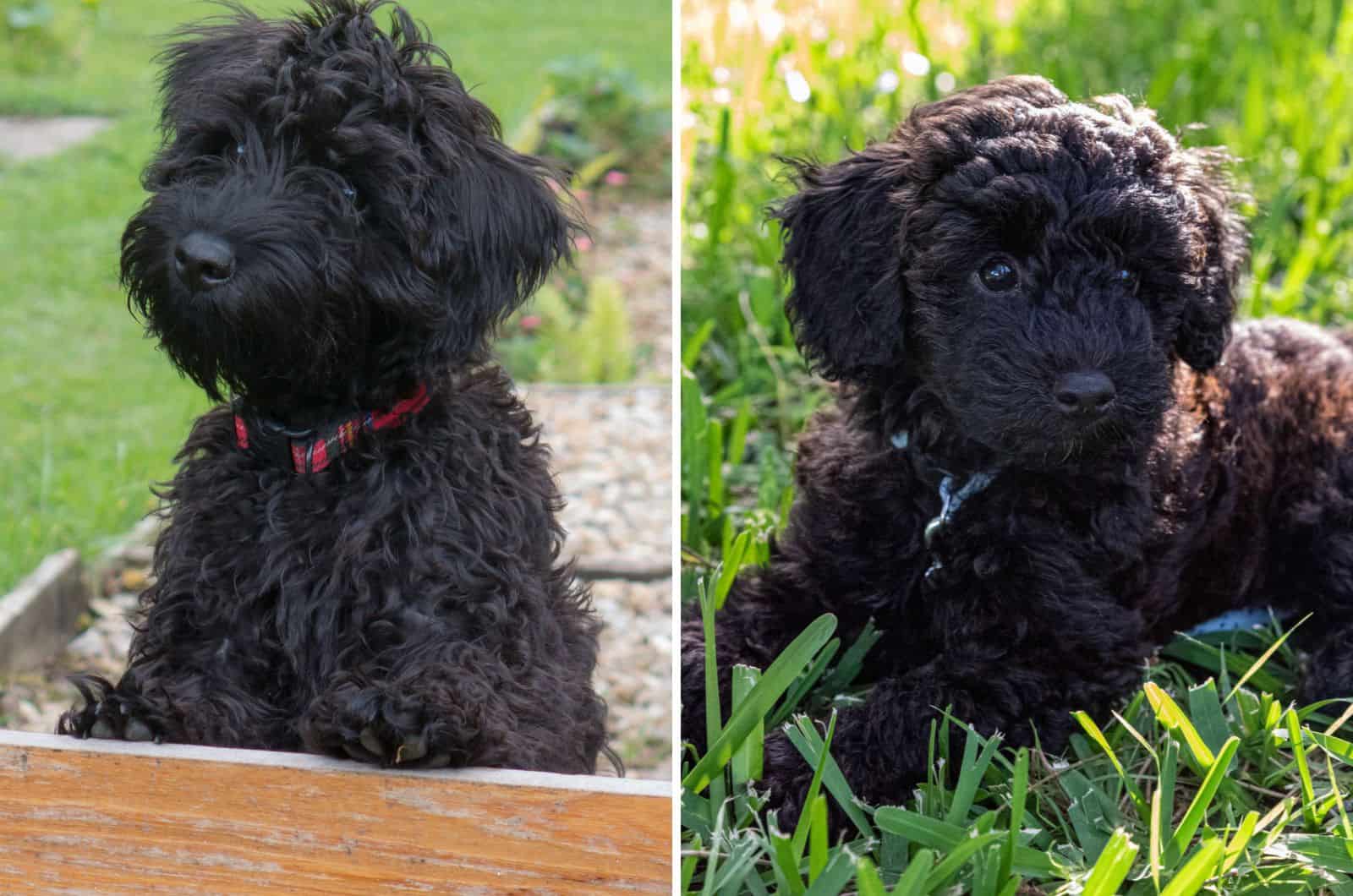Dog size is important when selecting your first or next canine. The miniature Schnoodle vs the toy Schnoodle duel is a fun one.
The smaller you go, the cuter they get. The convenience factor is great too – you can carry them to work or on trips, and they make anything look better just by sitting beside it.
Delving deeper into the differences will ease your choice, which is exactly what we will do.
Who Wins In The Miniature Schnoodle vs The Toy Schnoodle?
Typically, when talking about Schnoodle dogs, the first thing that pops into your mind is the Toy Schnoodle. Why? Because it is the most commonly bred combination.
While doing a miniature Schnoodle vs a toy Schnoodle comparison is all fun and games, you still need to know about both in order to make an educated decision.
Long story short, no one can make the decision for you, and getting either Schnoodle will bring joy to your life. To find out why, we have to go down the Schnoodle rabbit hole.
What Is In The Mix: 2 Dog Breeds That Make The Schnoodle
Pinch Of Poodle
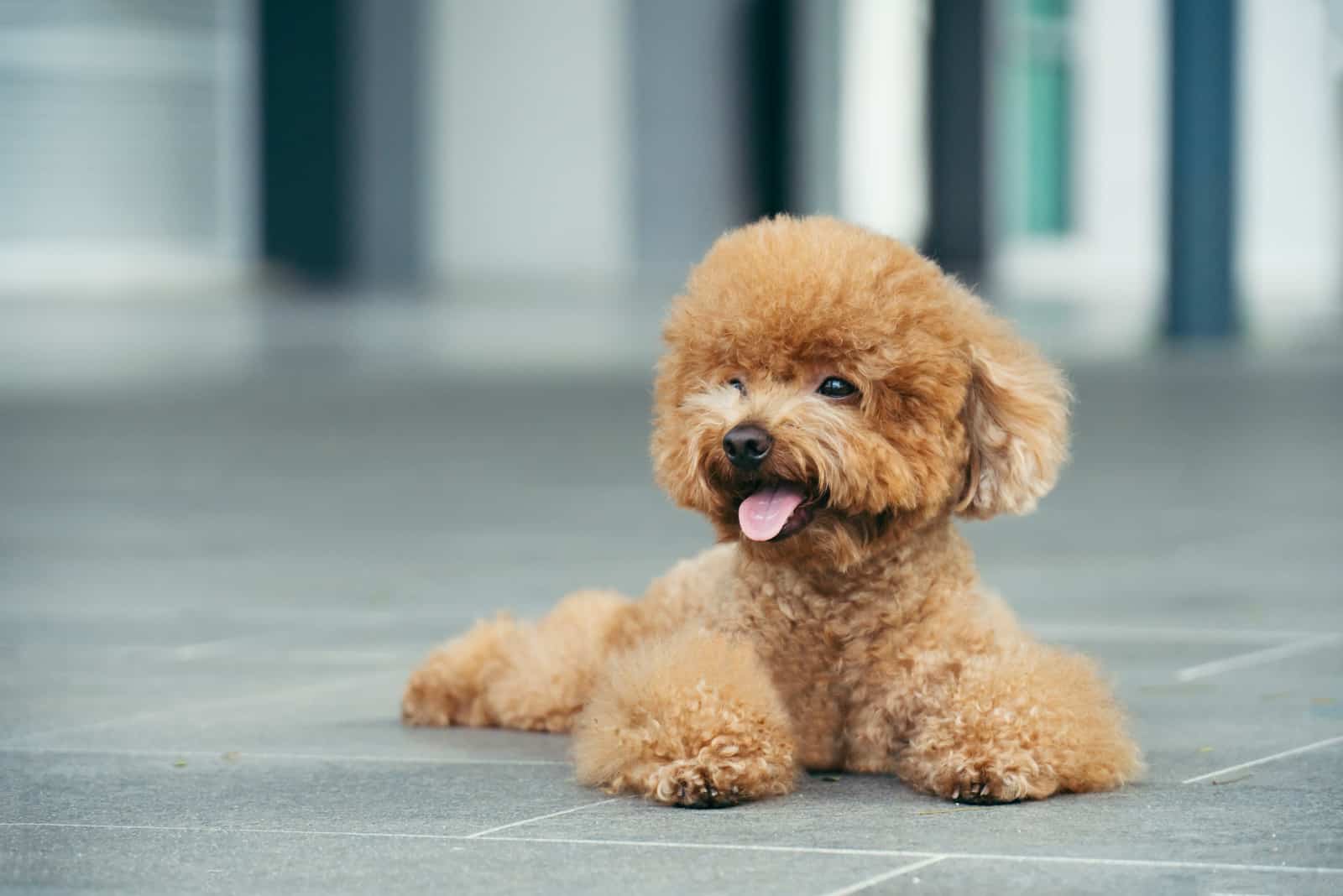
Getting to know a dog breed’s characteristics cannot be skipped. This becomes more apparent when we talk about mixed breeds, such as the Schnoodle.
Here is a quick Poodle feature rundown to contextualize the genetic presence in the Schnoodle crossbreed.
A Sporty Body Behind Noble Garments
Poodles project a noble energy, and they have been around nobility since they came onto the scene. Despite the frequent image of a rounded coat design that we see, the Poodle’s body is athletic, lean, and square-shaped.
Miniature and toy Poodles retain most of their bigger cousin’s features except size, and they come in two possible kinds of coat:
Corded Poodles have a rug-like look. The hairs appear as though they are woven, and they are usually styled in long strands that reach the ground.
Curly Poodles have… well, curly hair. Generally, the coat is known for its styling flexibility and easy shaping.
Taking care of the coat is not the easiest job in the world. Grooming needs are high despite a low-shedding potential.
An abundance of colors and combinations means there are more choices than you bargained for. Monochromatic Poodles come in all the main colors like black, apricot, white, gray, blue, brown, cream, cafe au lait, red, and silver. Along with a few mixed colors, all solids are AKC approved.
Markings are not according to AKC breed standards, and they can manifest as a white or a black mask, and black spots.
Chatting With The Poodle
They are among the most energetic dogs on the planet. Their coat sometimes tricks people into thinking they are simply big designer dogs. That could not be further from the truth.
A Poodle needs intense exercise to release all of its pent up energy. Relaxing walks will not be enough, though – you will need to have a structured routine for your Poodle to feel physically content.
Destructive behavior is not unfamiliar to the Poodle, but it is rarely a problem if you establish a thought-through activity itinerary. Yard size is not crucial here as long as there is a place other than the inside of the house or an apartment for occasional light playing or running.
Contrary to popular belief, the origin of the Poodle can be traced to German roots. The primary role was water retrieval and hunting so that explains the need for zealous activity levels.
The standard Poodle has a calmer demeanor than its smaller counterparts. This can be attributed to small dogs having self-confidence issues as their size does not quite match their athletic mind.
Poodles need constant company, and they can develop severe separation anxiety if left alone for long periods of time. Their trainability is also very high, but only if the owner handles it with tact.
They respond badly to punishment and erratic owners. Staying calm but assertive will yield good results.
Other than that, Poodles are marvelous family dogs, and they work well in dynamic households with children and strangers. The Poodle can be a fairly decent watchdog, too.
With A Slice Of Schnauzer
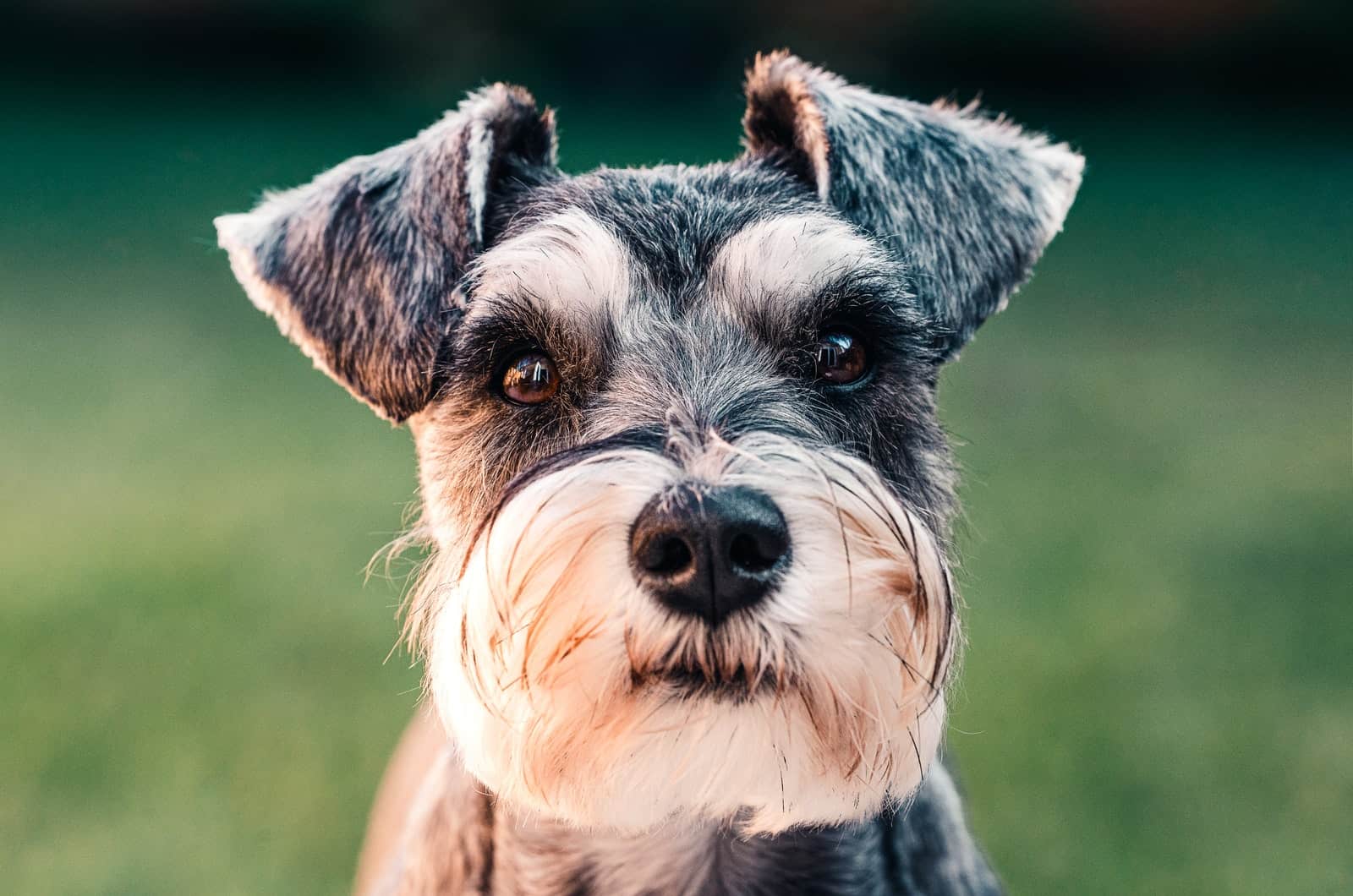
In order to completely absorb the Schnoodle experience, we need to meet the other parent, too. Adding to the gallant aura of the Poodle is a rugged working dog.
The Schnauzer and Poodle mix might turn out as one of the best things to happen to humanity since sliced bread. Let us dive in.
A Stylish Farmer Dog
Schnauzers were bred for hunting rodents and pests on farmlands. Their physical appearance makes this self-explanatory. Their body is hefty and athletic. Their physique is square – perfectly representing a medium-sized dog.
Farms and surrounding areas were often overgrown with thorny bushes and tough vegetation so the Schnauzer’s double coat became coarse and weather resistant. They are known for their very thick beard and elongated brows that remind us of an old wise man.
There are three possible colors of a purebred Schnauzer: black, pepper, and salt. There are other colors, such as brown, and white, but they are not recognized as breed standard by the AKC. Purebred Schnauzers should not have any markings.
A particular grooming technique for Schnauzers is called hand-stripping. Due to their coat being wiry and tough, brushing would remove the healthy hairs, and therefore, impede proper hair growth and even cause color change.
They are, otherwise, low-maintenance dogs in terms of looks, with minimal shedding levels. The coat is long, though, and seasonal shedding can make a mess if you do not handle the hair in time.
Ear cropping has been around with Schnauzers for a while. Though medically unnecessary, it is required for shows as it represents the classic look of the breed, and the AKC supports ear cropping in order to preserve tradition.
Back when the Schnauzer had the job of hunting and guarding, owners cropped their ears to give less ear surface for rodents to latch onto. Another reason was to avoid getting the dog’s ears caught in thorny bushes.
Shortening the tail up to the dog’s rear end is known as tail docking, and it is another practice that, in my opinion, has no place in the modern world. Luckily, this trend is slowly disappearing.
Evening At The Schnauzers
Breeds created for hunting and watchdog duty have always craved exercise. Energy levels in Schnauzers are pretty high. They prefer an active lifestyle rather than a sedentary lifestyle.
While Poodles were all about posh manners, the Schnauzer’s countryside gene is a bit more prominent by the amount of drool they produce. It is nothing over the top, but it should be a consideration.
This dog can be individualistic and headstrong, but it is very trainable. It is not the best dog for first-time owners. They prefer an owner and a family that leaves some private space for the dog’s peace of mind.
By being an excellent watchdog, they will bark whenever something they deem suspicious or threatening happens. Not only will they alert you, but they will also protect you. They love their family, and they are patient with children.
Schnauzers are playful, but wary of strangers. Having guests around will definitely not be a favorite pastime for this dog.
Schnoodle Size: Is It A Small Dog?
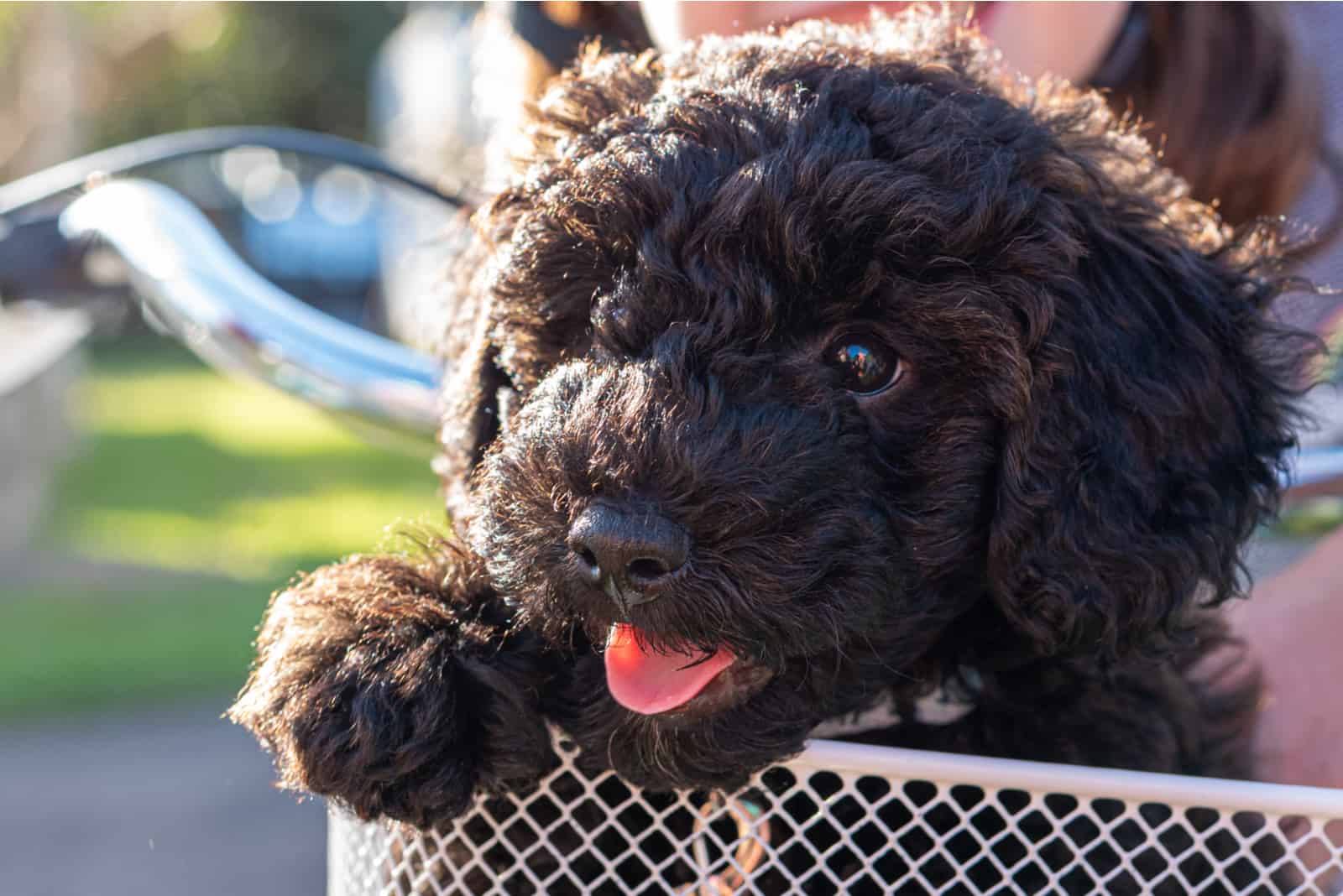
The Schnoodle by itself is only a Poodle x Schnauzer mixed breed. However, there are four sizes of the Schnoodle: a toy Schnoodle, a mini Schnoodle, a standard Schnoodle, and a giant Schnoodle.
Different sizes depend on the parent size. Bigger types of the Schnauzer and the Poodle parent will obviously produce a bigger Schnoodle altogether.
Pictures of the toy Schnoodle and the miniature Schnoodle are the two you will most often come across. Thanks to the booming trend of designer breeds in the previous decades, these two sizes are prevalent in terms of availability.
That is not to say that you cannot find a bigger Schnoodle. You just have to look harder for a breeder.
The Magic Formula
To get a toy Schnoodle, you take a miniature Schnauzer parent and let it meet a toy Poodle. That creates love at first sight, and an egg-like, tiny Schnoodle is the end result of that affair.
Now that we have that out of the way, it is crucial to say that this is the most common mix of Schnoodle. There are numerous other combinations that result in different sizes of Schnoodles.
Breeding a miniature Schnoodle is achieved by crossbreeding a miniature Schnauzer with a miniature Poodle. The result is a designer dog with a moderately excitable personality that loves company.
The third size is the standard Schnoodle. Simple math: standard Poodle + standard Schnauzer = standard Schnoodle.
The largest of all – the giant Schnoodle is a product of mating a giant Schnauzer with a standard Poodle. The result looks rather amazing, to be honest.
Poodle Sizes
The smallest Poodle representative is the toy Poodle. This little dog only grows up to 10 inches in height for males.
The second tiniest Poodle award goes to the miniature Poodle. Add about another five inches to the toy poodle and you got yourself a mini.
All this small-dog talk needed was a medium- to large-sized dog from the Poodle delegation. The largest type of poodle is the standard Poodle. They grow up to 25 inches in height.
Your poodle’s mileage may vary up to a few inches depending on the sex of the dog and breeder practices.
The American Kennel Club recognizes all three sizes as standard purebred.
Schnauzer Sizes
A Schnauzer comes in three sizes, too. The tiniest is the miniature Schnauzer. It reaches a maximum height of 14 inches, and is more similar to the miniature than the toy Poodle.
Adult standard Schnauzers grow up to 19.5 inches in height, and are a medium-sized dog breed.
Unlike the Poodle, there is a giant Schnauzer and it is a large dog. They grow up to 27.5 inches, and are considered to be an “improved” standard Schnauzer.
Again, all these size variations are American Kennel Club-approved.
Toy vs Mini
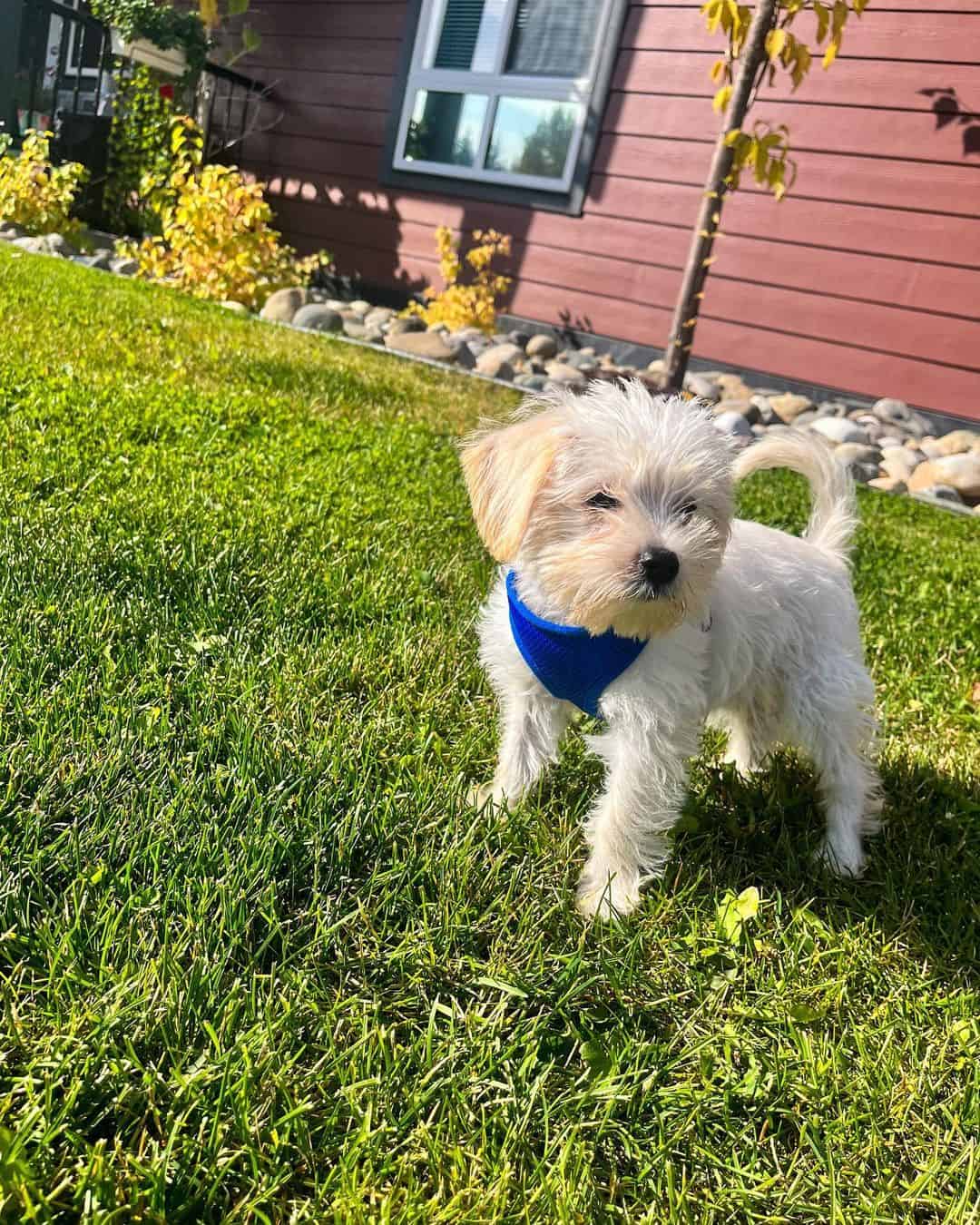
Photo from: @arlo_theschnoodle
The toy, also known as the teacup Schnoodle, is a small dog. It is more than small, I would say. Breeding two of the tiniest specimens of the breed means that you ought to stay small! The mini is slightly larger than the toy, but nonetheless, it is an incredibly adorable dog.
Toys grow up to 10 or 12 inches compared to the mini’s 12 to 15 inches. Even though you might believe the difference in size is negligible, their character changes in a few aspects, too.
A toy Schnoodle’s exercise needs will be lower than that of a mini Schnoodle. Their bodies’ capacity to hold and exert energy is naturally lower due to the amount of food they can eat, and their metabolism’s ability to process the nutrients.
Smaller often means more efficient, and toys are undoubtedly efficient canines. A downside of toy Schnoodle is that it is much more sensitive and vocal than their bigger doppelgangers.
The mini will have a slightly more pronounced prey drive, while you will have more luck with food in training the toy Schnoodle. In fact, feeding a mini Schnoodle is similar to feeding a miniature Schnauzer!
Grooming will also be quite easier with this tiny dog. A couple of brush swipes and you are done for the day.
Because of the nature of breeding smaller dogs, both toys and minis have more recessive genes than their larger counterparts, and they are susceptible to a wider range of health issues.
Toy Schnoodles are more prone to obesity so a comprehensive and dosed diet plan is mandatory. Toy puppies are significantly smaller than other size variants, and they need extra care and attention so they do not get injured by children or larger pets you might own.
Standard vs Giant Schnoodle
Standard Schnoodles are medium-sized dogs, and they are certainly a handful. The standard will have a different dynamic than the smaller Schnoodle. First of all, they require more physical activity.
A bigger body needs more food, which, when consumed, produces high energy reserves. That energy has to be channeled into meaningful exercise like obedience training through games.
The standard Schnoodle is very energetic. Its size is perfect for energy dissipation through running and jumping. Hiking or running is a great bonding activity for both the owner and the Schnoodle.
The giant Schnoodle is calmer, and requires less exercise, but it still enjoys an active lifestyle more than lying around.
Both sizes shed equally, and grooming needs are on par. A giant Schnoodle will be a better guard dog due to its mixed-breed background involving different types of protective large dogs.
The proportions alone mean that a standard Schnoodle will have an easier time with apartment living. Still, both sizes will thrive in a household with a larger yard and/or access to nature.
Despite being of considerable size, giant Schnoodles are unbelievably gentle. I would dare say that they are even gentler than the standard Schnoodle. It is possible that they are aware of their enormity, and because of that, they take additional care when interacting with children or smaller pets.
Strength plays a major role in the dog’s confidence, so sometimes your giant Schnoodle might decide to stop listening to you because it feels a lack of leadership. However, this is not to say that standard Schnoodles are the epitome of obedience.
Barking About Temperament
Schnoodles, particularly the miniature and the toy Schnoodle, have a thing that makes them one of the most infamous small dogs – they are vicious barkers.
They will stand in front of you, intensely stare, start mildly shaking, and unleash the barkaton on your ears. They love attention, and they will not take ‘no’ for an answer.
A quirky personality means voicing your opinion often… very often. More often than your owner would like. This is a way of releasing their energy in case you forgot to take them for a walk.
Regardless, they are impeccable companion dogs. If you promised them to be there all the time while still a puppy, they will hold you to your word.
What You Need To Know About Schnoodle Health
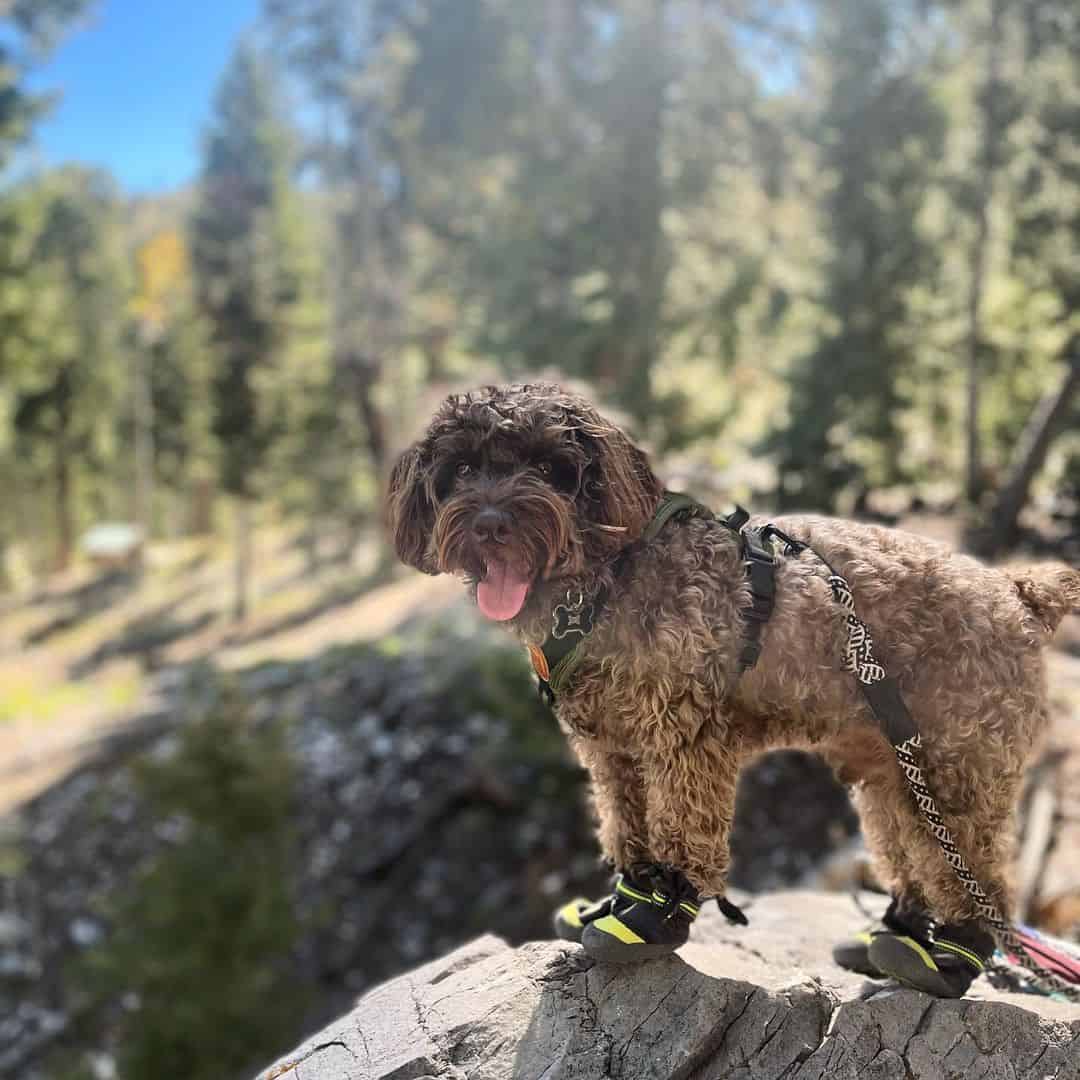
Photo from: @gizmobgood
Schnoodle Dog Lifespan
Poodles and Schnauzers alike have great numbers in the life expectancy department. Needless to say, their noodle offspring – the Schnoodle – took after them.
Good eating habits, a complete diet, and regular exercise will extend your Schnoodle’s average lifespan by years. In context, that means that a well taken care of Schnoodle will live close to 15 years of age, which is five years more than the lowest average life expectancy of 10 years.
Schnoodle Health Problems
The Schnoodle’s parent breeds are generally without health issues. By being a hybrid dog, the Schnoodle inherited the best and worst things from its parents. Unfortunately, that includes health conditions.
The choice of breeder is of immense importance when looking for a Schnoodle puppy. A good one will practice ethical breeding, and provide health guarantees for both parents and puppies.
Progressive Retinal Atrophy (PRA)
This health condition is one of the most common with mixed breeds. It is particularly present in smaller dog breeds like the toy and the miniature Schnoodle.
Cells, which are building blocks of the eye’s functional parts, start deteriorating when a group of diseases starts attacking the photoreceptors in the eye.
The Schnoodle’s eyesight will gradually worsen, ultimately ending in complete blindness. As of yet, there is no treatment for PRA, but dogs (in a number of cases) grow accustomed to the loss of eyesight and manage to lead a fairly normal life.
Patellar Luxation (Luxating Patella)
Crossbreed dogs, such as the Schnoodle, often suffer from patellar luxation. The condition is manifested by the knee joint not aligning with the dog’s lower leg bones (ulna and radius).
There are a few types of luxating patella, and they depend on the area from which the misalignment occurs (side, front, or back).
Since it is a congenital health condition, your breeder choice is (once more) of great importance. The treatments can be over-the-counter NSAIDs or surgery. The choice of treatment is contingent on the severity of the condition.
Epilepsy
This condition can be passed on from the parents to the puppy, but it can also be developed due to underlying conditions. Untreated exposure to allergies for a long period of time can increase the chances of epilepsy.
Allergies are present in Schnoodles, and while the causes are different, one of the more common culprits is dander allergy. This is caused by dead hair follicles not being removed from the skin’s surface.
Hip Dysplasia
A Schnoodle can suffer from hip dysplasia despite the condition being present among many dog breeds.
Toy and miniature Schnoodles are most at risk since the rate of inbreeding is higher than with standard or giant Schnoodles. Even if it is a congenital condition, it can be either exacerbated or caused by obesity.
Hypoallergenic Properties Of The Schnoodle Dog
Hypoallergenic implies that the particular product or, in this case, dog has a low chance of causing allergic reactions. Poodles are known as dogs with a “hypoallergenic” coat, and the Schnoodle’s hair is said to carry the same property.
Even though they are considered as such, people with severe dog allergies should avoid getting dogs. The longer you are exposed to an allergen, the bigger the chance your reaction will intensify.
What Price To Expect While Searching For A Schnoodle Puppy
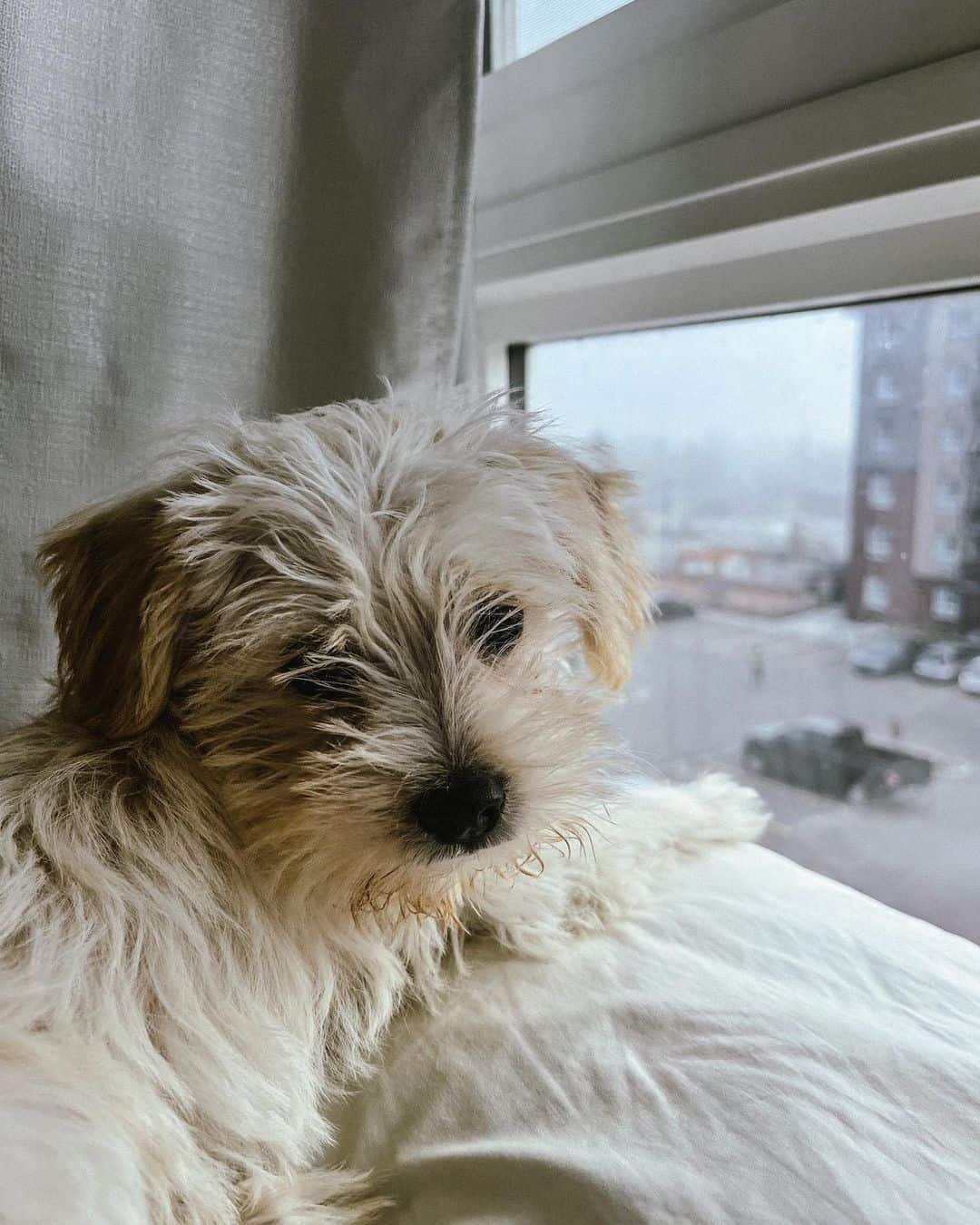
Photo from: @arlo_theschnoodle
While schnoodling around the internet looking for Schnoodle puppies, you might stumble upon one that has a very affordable price, and wonder if that is right.
Before thinking about buying a Schnoodle puppy, ask or visit one of your local shelters. People often abandon their dogs due to financial constraints, inconvenience, etc., and you might find the perfect Schnoodle for yourself without spending a penny.
In case you want to invest money into a puppy, then do not settle for the first, closest, or most affordable breeder you find. Scour the web for opinions and reviews. Enquire with veterinarians or Schnoodle dog clubs about breeder recommendations.
The average price for a Schnoodle puppy is anywhere from $1,000 to $2,000. This also depends on the Schnoodle size. Rarer sizes, like the giant Schnoodle, will cost you more due to their scarcity. A giant Schnoodle’s price ranges from $800 to $5,000.
Concloodle
Whichever Schnoodle size you choose, you will have to become a Poodle aristocrat and a Schnauzer farmer in order to fully understand and handle your dog. At least they have one thing in common: both can be very stubborn.
Contrasting the miniature Schnoodle vs toy Schnoodle kind of helps polish your opinion on either one or the other. Still, I recommend you not dwell too much because making a decision is all about properly informing yourself.
If you got captivated when reading about the toy Schnoodle, and then started Googling more photos and videos of it, then you already decided. The same goes for any other size you found interesting enough to start researching in more detail.
Do not wait… just do it.
Read Next: Cavapoo Vs Maltipoo: So Similar, But So Different
